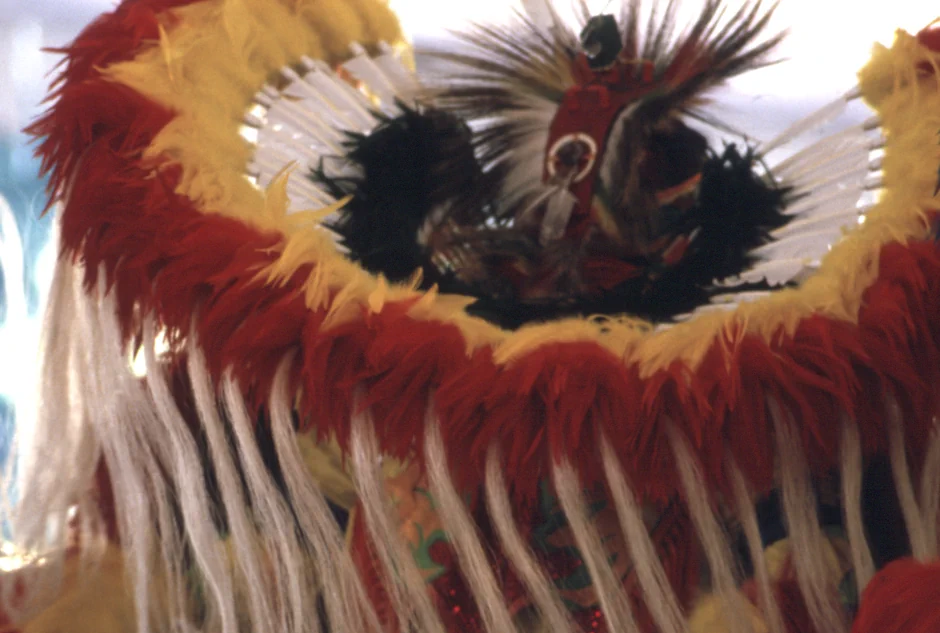The Indigenous Cherokee People
Ethnonyms: Aniyunwiya, Keetoowah, Tsalagi Countries inhabited: USA Language family: Amerind Language branch: Iroquoian
Some people say that the indigenous Cherokee are a people united across two nations; others say that they are a people divided by two nations. Those two nations have existed for the past 180 years. They are the Eastern Band of Cherokee Indians and the United Keetoowah Band of Cherokee Indians of Oklahoma.
The reason these two nations exist today is an important part of Cherokee history.
In the pre-Columbian era, the Cherokee lived in the area that is now western North Carolina, eastern Tennessee and northern Georgia; although their hunting grounds and their trading routes went much further afield than that. They had lived in this area for probably about a thousand years before their first contact with Europeans in the early Sixteenth Century. That initial contact was scarce, and it left Cherokee society little changed for the next 300 years.
European expansion and the consequent need for greater trade brought mass contact beginning in the early Nineteenth Century. Contrary to popular belief, these European settlers found a largely peaceful people, rich in culture and more advanced in their democracy and their political organization. For example, future generations were represented in the political process; Cherokee women were not only welcomed at decision-making council meetings, they were active political members of the community.
The Cherokee traditionally practiced a monotheistic form of Animism, which, perhaps, helped in making initial contact relatively successful for both them and the early European settlers. It was also undoubtedly a large factor in their rapid conversion to Christianity; very few Cherokee practiced their religion after this wave of contact and almost none do today. Inter-marriage between Cherokee and Europeans became quite common during this period.
One of the most famous figures in Cherokee history had been born a generation before. Sequoyah, a man of French-Cherokee descent, is the only person to invent a writing system for any indigenous North American language.
This was a huge undertaking that took twelve years to accomplish. Technically a syllabary — because each written character represents a syllable in the spoken language — his writing system is the standard Cherokee alphabet to this day. Both Cherokee nations use this alphabet to write, for example, street signs on Cherokee land.
Around the time that Sequoyah invented his writing system, relations with the European settlers had become more than strained. Suspicion, resentment, even violence were now part of normal life. Many Cherokee had already moved further west into the Blue Ridge Mountains; some may have moved as far as Mexico.
This voluntary migration was nothing compared with what would follow. Gold had already been discovered on Cherokee land in Georgia. This was probably the largest single factor in the legislative efforts of the US Congress at that time to forcibly remove every Cherokee from the area. Although these efforts were challenged along the way by both Cherokee and non-Cherokee, changing attitudes and political decisions utlimately weighed in favor of the Congress.
In 1830, then-President Andrew Jackson signed the Indian Removal Act. Nine years later the Cherokee were rounded-up, in the winter, and then marched to "Indian Territory" in Oklahoma. Around 14,000 were forced to take this journey; almost a third died along the way. Both the route and the event have come to be known as the "Trail of Tears."
Today, visitors to both North Carolina and Oklahoma can attend dramatized recountings of these events. The North Carolina production, Unto these Hills, was revised for the 2006 season.
Visitors will also witness many other forms of Cherokee heritage, tradition and culture. Events and festivals include powwow/dance competitions, music performances, story-telling and arts and crafts ehxibitions. In Cherokee, NC the Oconaluftee Indian Village is a reconstruction of Cherokee village life in the middle of the Eighteenth Century.
Visitors can also participate in tourist-oriented pastimes. Gambling is today the biggest source of income for the Cherokee, like it is for many native American peoples. (One local jokes with tourists: "Don't be shy to come dance with us... we don't scalp you any more... we have a casino down the road to do that.")
The revival of Cherokee tradition goes beyond what most tourists will see. Today, only about 20,000 people still speak the language — even fewer can read or write using Sequoyah's syllabary. Small as these numbers are, Cherokee is the only remaining spoken language in the Southern Iroquoian sub-branch of all Amerind languages. Some Cherokee children are now being taught the language for the first time.
Photography copyright © 1999 - 2025, Ray Waddington. All rights reserved. Text copyright © 1999 - 2025, The Peoples of the World Foundation. All rights reserved.

Waddington, R. (2006, revised edition 2024), The Indigenous Cherokee People. The Peoples of the World Foundation. Retrieved December 18, 2025, from The Peoples of the World Foundation. <https://www.peoplesoftheworld.org/text?people=Cherokee>
Web Links Cherokee Language Teaching Visit Cherokee Cherokee Nation Tahlequah Oklahoma United Keetoowah Band of Cherokee Indians in Oklahoma Museum of the Cherokee People The Cherokee Nation Books Mails, T. E., (1996) The Cherokee People: The Story of the Cherokees from Earliest Origins to Contemporary Times. New York: Marlowe & Company. Teuton, C. B., (2012) Cherokee Stories of the Turtle Island Liars' Club. Chapel Hill: University of North Carolina Press.












